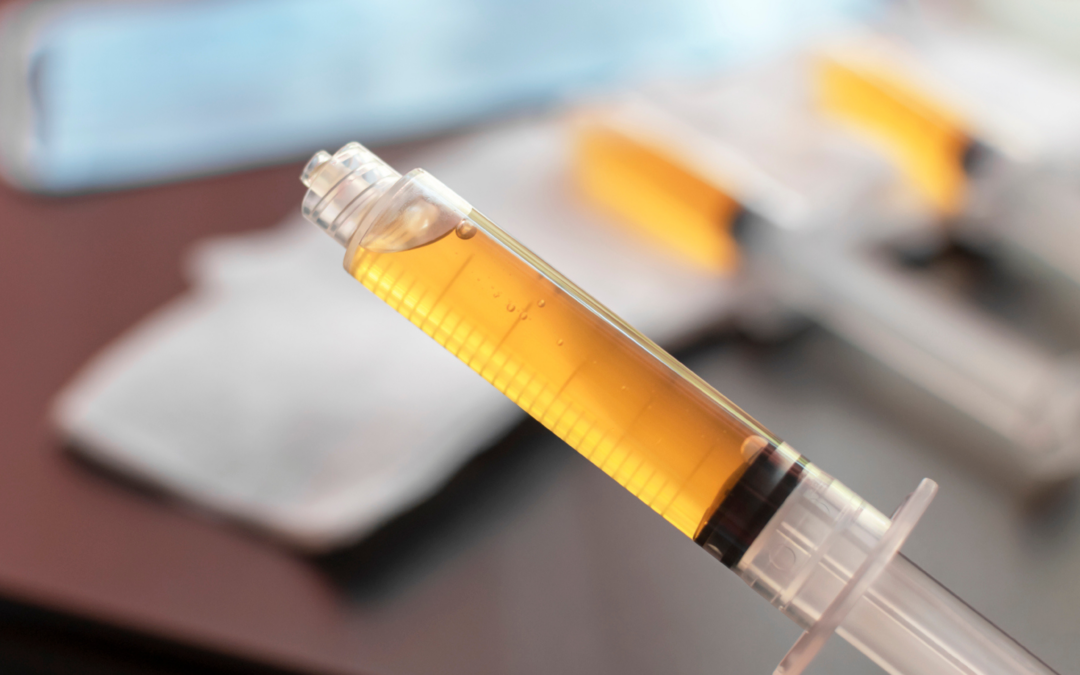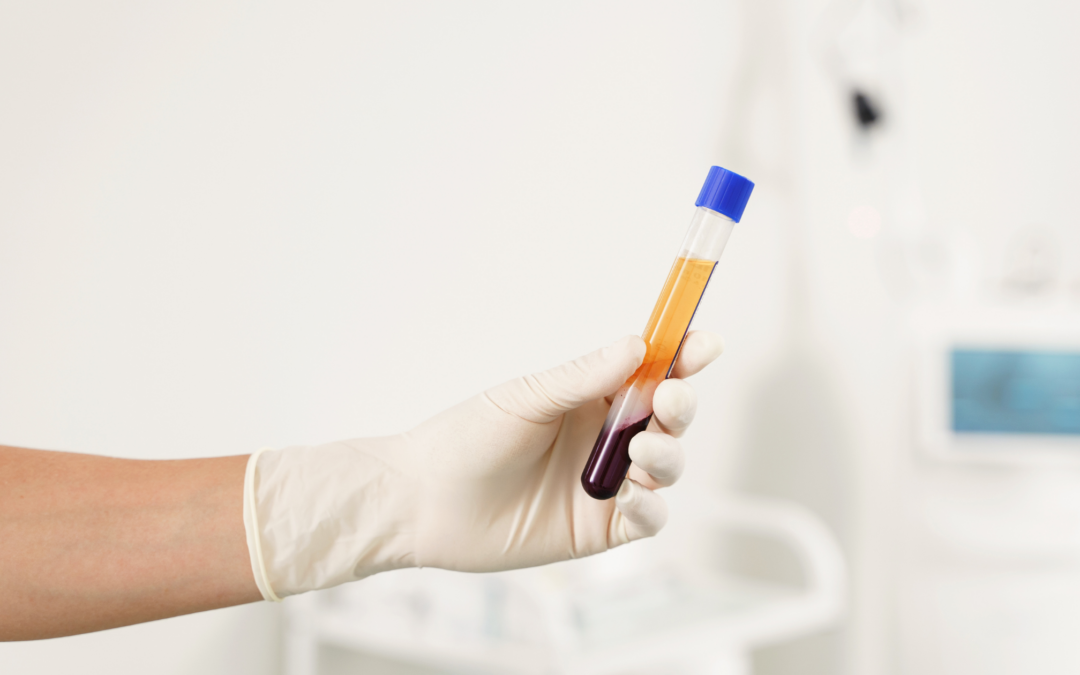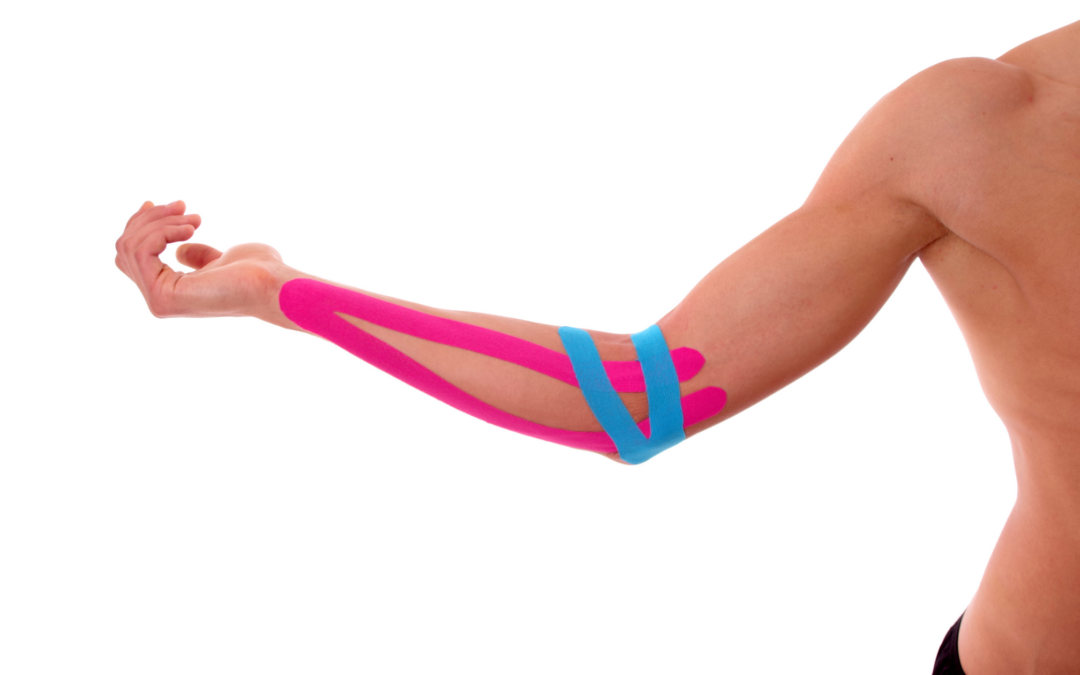Dec 22, 2023
Betty is an exceptional physical therapist who takes care of orthopedic patients. She has knee osteoarthritis and trusted the care of Dr. Ambach and her team to treat her knees. She had an excellent response to platelet rich plasma (PRP) treatment in keeping her knees healthy, managing her pain and supporting her highly active lifestyle.”

I can not say enough about how excellent the care is at SanDiego Orthobiologics. I am a PT and often refer patients here with the utmost confidence for consultations and injections. I have personally undergone PRP injections for my knees with Dr Ambach. She is extremely knowledgable, caring and professional. I have had good results treating mild to moderate arthritis and highly recommend to anyone experiencing orthopedic problems that limit their daily life.
– by Betty Parmenter on Sat Dec 16, 2023

Nov 17, 2023
Platelet-rich plasma (PRP) can be an effective treatment for osteoarthritis in the shoulder, knee, hip, or thumb. But when it comes to the use of platelet-rich plasma therapy to treat joint pain, one size does not fit all. To reach its maximum benefit, PRP should be customized to the specific joint or tissue being treated.
How PRP Works for Joint Pain
Platelet rich plasma is an FDA compliant treatment where a small amount of the patient’s own blood is drawn and then spun in a centrifuge to isolate and concentrate the platelets from the blood sample. The concentrated platelets release numerous growth factors that help to reduce inflammation and stimulate healing and repair of injured cartilage and tissues. Experienced regenerative medicine specialists know how to determine the correct formulation needed and then use ultrasound or fluoroscopic (X-ray) guidance to deliver this customized platelet rich plasma concentration directly to the joint in need of treatment. Sometimes the tendons and ligaments around the joint need to be treated as well.
Key Factors that Impact Platelet Rich Plasma Therapy
We’ve already stated that PRP needs to be customized to the specific joint being treated, but there are other factors that also play a role in successful treatment. These include:
- Diet: Because the platelets are drawn from the patient’s own body, their quality can be highly influenced by the patient’s diet. A folate-rich diet or a diet rich in berries, such as blueberries, may help boost platelet count in a patient’s blood.
- Medications: Patients may be advised to stop taking aspirin, nonsteroidal anti-inflammatory medication (Advil, Aleve, etc.), blood thinners or other medications that interfere with platelet function.
- Targeted Delivery: Some practices simply inject PRP into the joint without using any image guidance. This is quite literally “stabbing in the dark.” The best results occur when the treatment is delivered specifically to the damaged area using image guidance.
- Technology: Many practices offering PRP do not have the highly specialized equipment necessary to process the patient’s blood so they can receive the highest levels of growth factors and proteins that promote tissue repair.
- The extent of the damage or injury: All patients require a thorough history, physical exam, and imaging studies to determine if their joint is appropriate for PRP treatment. Occasionally, damage to the joint in question may be too advanced for PRP to be considered a viable treatment option.
How Effective is Platelet Rich Plasma Therapy?
Platelet-rich plasma (PRP) has been practiced for years, having been one of the first biologic therapies used to treat orthopedic conditions. It is both art and science: art in the skill and expertise of knowing exactly where to deliver the treatment; and science in knowing how to formulate a specifically customized concentration of PRP to achieve maximum benefit.
When administered correctly under the right protocols, most patients gain relief within four to six weeks following PRP therapy and do not require any additional care.
And since the procedure is performed on an outpatient basis, there is no need for hospitalization or lengthy rehab. Nothing more than ice and rest are needed to minimize discomfort as the body begins to heal itself immediately after the injection, and patients are often able to resume normal activities within days. Physical therapy may also be recommended to regain joint mobility and strength.
Fill out the form below to learn more about PRP Therapy for Joint Pain at SDOMG.

Jan 5, 2023
Recent research in the medical field has unearthed the body’s power to regenerate and repair injured tissue. Doctors continue to learn more about Platelet-Rich Plasma (PRP) therapy, which uses of a patient’s blood to catalyze healing. PRP has gained popularity in treating injuries amongst athletes as well as relieving chronic pain.
This article walks you through PRP Injection therapy and answers some common questions regarding this treatment.
What Is Platelet-Rich Plasma (PRP) Injection Therapy?
Plasma is the liquid portion of blood, which carries platelets, red blood cells, and white blood cells, as blood circulates the body. Platelets are responsible for forming blood clots to stop bleeding and promote healing when blood vessels are injured.
PRP injections leverage the restorative functions of platelets. The patient’s blood is drawn to concentrate the platelets. This is achieved by running the blood through a centrifuge to separate other blood components and obtain a plasma solution rich in platelets.
The concentrate is then administered to the patient by injecting it into the injured body tissue to speed up healing. The injected platelets release growth factors that catalyze the repair of damaged tissues.
What Conditions Are PRP Injections Good For?
Scientists continue to research ways in which PRP injections can be effectively used to foster healing in the body. Physicians use PRP injections in the following areas:
Healing Damaged Tendons
Doctors administer PRP injections to hasten the healing of tendons that would ordinarily heal slowly. Common acute tendon injuries include Achilles tendonitis, golfer’s elbow, tennis elbow, and jumper’s knee, among others.
Osteoarthritis
PRP injections are used to treat osteoarthritis in multiple joints, such as knees, hips, and shoulders. A study that involved a group of 160 individuals with knee osteoarthritis showed that PRP injections yielded better results when compared with hyaluronic acid injections (also known as gel injections), which is a conventional regimen used to treat osteoarthritis.
Recovery of Post-Surgery
Doctors may administer PRP injections to help heal ligaments and tendons after surgery. That way, they fast-track the body’s healing process.
Injuries Among Athletes
Health practitioners have used PRP therapy to tackle soft tissue injuries, such as ankle and knee sprains, and strained hamstring muscles among athletes.
What Happens During A PRP Injection Procedure?
- A blood sample is drawn from the patient’s arm.
- The blood is placed in a centrifuge to separate the various blood components.
- The isolated platelet-rich plasma is prepared for injection into injured tissues.
- The doctor administers PRP Injection to the affected area using image guidance to ensure proper injection placement, including ultrasound or fluoroscopy.
What Are the Side Effects of a PRP Shot?
PRP injection therapy is safe given that it uses the patient’s own blood. Possible side effects are those associated with other injections which include:
- Pain from the injection
- Bleeding
- Injury to nerves
- Infection
If you’re looking for safe relief from chronic pain, then PRP Injection therapy is an option worth trying. Contact us at San Diego Orthobiologics Medical Group for your consultation and PRP injection with professional healthcare practitioners. Our physicians will help you navigate various medical options to manage chronic pain and find quicker recovery.

Jun 10, 2022
Many people develop “tennis elbow” due to repetitive strain or stress on the elbow. Tennis elbow, also called lateral epicondylitis, is a common ailment among athletes and patients that perform activities requiring repetitive elbow movement, lifting heavy loads, or using hand tools. The condition may cause elbow pain and stiffness that worsens with wrist extension and gripping.
Patients are regularly treated through over-the-counter anti-inflammatory medications, application of cold packs, exercise therapy, and braces. Unfortunately, tendons have a rather poor blood supply causing a prolonged healing period. Platelet-rich plasma (PRP) therapy has emerged as a very popular, effective treatment for tennis elbow.
What is PRP Therapy?
Platelet-rich plasma (PRP) therapy is a safe, unique, and effective procedure used to treat musculoskeletal injuries. PRP involves injecting a high concentration of the patient’s own platelets to accelerate the healing of injured muscles, joints, tendons, and ligaments.
The plasma is separated from other blood cells in a centrifuge and injected into the patient’s injured tissues. The injection is done using ultrasound imaging guidance.
PRP Therapy as a Tennis Elbow Treatment
Elbow tendonitis conventional treatments may not be effective. Platelet-rich plasma (PRP) injections speed up the healing process and have become one of the most successful treatments for tennis elbow.
PRP therapy boosts the patient’s natural healing process to repair injured tissue. There are proteins, also known as growth factors, found in platelet-rich plasma that assist in the healing of the elbow tendons. PRP stimulates the release of anti-inflammatory growth factors and promotes collagen synthesis. According to research, tennis elbow patients who got PRP therapy improved by 71 percent in up to 24 weeks, compared to 56 percent in the control group. In addition, PRP has a reduced chance of side effects because it comes from the patient’s blood.
Recovery Time after PRP for Tennis Elbow pain
PRP-treated patients should expect some pain relief after 3-4 weeks and anticipate major improvements at 6-12 weeks. The patient’s healing rate may differ depending on the severity and duration of the condition. A study suggests that PRP was associated with more improvement in pain intensity and function in the long term compared to corticosteroid shots.
Why Choose PRP Therapy?
Platelet-rich-plasma therapy is now a popular regenerative injection that is effective in healing tennis elbow. PRP treatment for lateral epicondylitis has various benefits. PRP therapy is a convenient, quick, in-office process that offers long-term relief for tennis elbow pain. In addition, PRP treatment uses your own blood, so there is no risk of allergic or immune reaction, and no non-natural substance is introduced into your body.
Bottom Line
PRP injections stimulate the release of anti-inflammatory growth factors that boosts tendon regeneration. In addition, PRP therapy promotes collagen synthesis, which plays a major role in healing the damaged tendon.
PRP therapy is a game-changer in the medical field used to address musculoskeletal pain without opting for surgery. PRP therapy is a viable treatment for your tennis elbow condition. Please fill out the form below to contact our team.

Oct 8, 2020

Join our free webinar to learn about PRP, an innovative non-surgical treatment option for osteoarthritis and other orthopedic conditions.
Dr. Mary Ambach specializes in non-surgical orthopedics, regenerative therapies, and interventional pain management. As a key thought leader in the field of Regenerative Medicine, Dr. Ambach conducts research, trains physicians, and lectures at international medical conferences.
Dr. Christopher Rogers is one of the world’s leading experts in orthopedic regenerative medicine and a renowned speaker at national medical conferences. He has developed new approaches for the treatment of tendon injuries, osteoarthritis, and disc degeneration which provide a safe and viable alternative to surgery.

Sep 22, 2020
A patient of Dr. Christopher Rogers, Kristi Plume, has had successful PRP injections for two separate injuries. A torn rotator cuff was healed within 2 months of receiving the injection, by healing the tendon. Within 2-3 after the injection, Ms. Plume was pain free and able to resume full use of her shoulder and arm.
Only months later, Ms. Plume underwent PRP injections to treat osteoarthritis in both of her knees. The injections allowed her to get back to doing what she loves:
I’ve received PRP treatments from Dr. Rogers twice now for 2 different injuries. The first injury, a torn rotator cuff, completely healed within 2 months of receiving the PRP injection. It was quite fascinating to see the “before” and “after” ultrasound pictures, whereas the “before” showed a moderate tear and the “after” showed nothing but a healed tendon. Moreover, I was pain free and able to resume use of my shoulder/arm within 2-3 weeks from the date of the procedure. The first procedure was so successful, I underwent a PRP procedure again a few months ago for osteoarthritis in both of my knees. The PRP treatments have quite literally changed my life by allowing me to return to the active lifestyle I’ve always enjoyed. In addition, I avoided costly surgery, long-recovery times, and permanent, long-term pain and discomfort. I have full use of both my shoulder and knees without pain or discomfort. Dr. Rogers has a flawless bedside manner and he and his team of professionals deliver first class service to make their patients feel truly cared about. I cannot recommend San Diego Orthobiologics Medical Group enough.
Kristi Plume has use of her shoulders and knees without any pain or discomfort.





